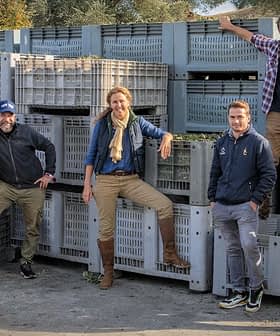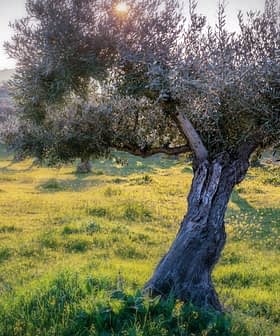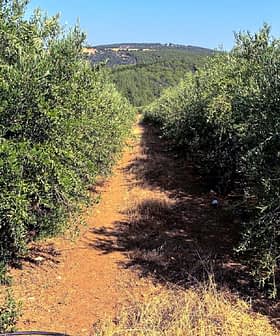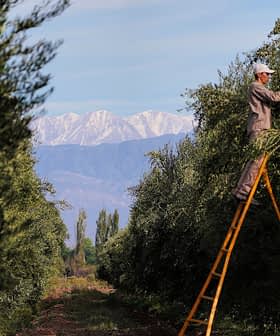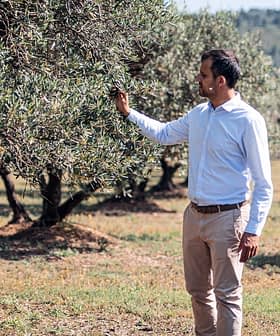Emigration, Infrastructure Hamper Albanian Agriculture

Albanian olive growers are facing challenges due to emigration and a lack of infrastructure, resulting in an aging workforce and difficulties in harvesting. Despite efforts to modernize the sector, including improving quality and packaging, exports have not kept pace with production increases, with Albania exporting 60 percent less olive oil in the first nine months of 2024 compared to the same period in 2023.
Albanian olive growers are struggling due to emigration and inadequate infrastructure.
The mass departure of young Albanians in search of better opportunities has resulted in an aging workforce in the agricultural sector.
This labor shortage is particularly detrimental to olive farming. Due to Albania’s historically fragmented land ownership and the steep terrain in the country’s olive-growing region, planting, pruning and harvesting are usually done manually.
We have to use mules (to transport the olives), like the Middle Ages. Otherwise, we can pay for an all-terrain vehicle to take the olives to the mill, but that is costly.
Albania is home to around 12 million olive trees, primarily along the coast and in the inland region of Berat, where olives and other fruits are vital to the local economy.
According to demographic data from the census, Albania’s population fell from 2.8 million in 2011 to 2.4 million in 2023, with rural areas most affected.
“There are no more youngsters here; they’ve all gone already,” Ysteak Molitaj, an olive farmer from Molishte, told Balkan Insight.
See Also:E.U Report Predicts Stagnant Olive Oil MarketMolitaj called his son, who lives in Greece, to come home and help with the harvest, but many other farmers cannot harvest all of their trees.
Meno Besimaj of the Agricultural Technology Transfer Center in Vlorë said the rural exodus has increased farmers’ production costs. As a result, olive oil prices at origin have risen from $5 to $6 (€4.6 to €5.5) per liter in 2023 to $8 to $10 (€7.7 to €9.6) in 2024.
“The labor shortage means that the value of a working day has also increased,” Besimaj told a conference of olive farmers and millers.
“About 30 percent of the cost of olive production is made up of harvesting alone,” he added, “even though olive harvesting is becoming mechanized as there are now many battery-powered and electric or diesel and gasoline-powered olive shakers.”
Among the reasons for the rural exodus is the poor infrastructure in the countryside.
While some investors in the Albanian olive sector, including Andrew Strong from The Illyrian Press, insist that infrastructure has improved over the past 20 years, local farmers believe that much more work is needed.
Many rural unpaved roads are in poor condition, making it more challenging to hire laborers for the harvest, purchase necessary inputs such as bottles, and transport bottled olive oil to markets and distributors.
“We have to use mules, like the Middle Ages,” Molitaj said. “Otherwise, we can pay for an all-terrain vehicle to take the olives to the mill, but that is costly.”
According to the World Bank, 49 percent of rural producers identified inadequate transportation, particularly the absence of all-weather roads, as their most significant challenge.
Additionally, the lack of modern storage facilities results in spoilage and waste. While recent government investments in modern mills have helped move the dial, there is some concern that adequate training programs have not accompanied these.
Adhurim Lazaj, an olive oil specialist, said Albanian farmers must improve quality and focus on individually packaged instead of traditional bulk exports.
“To get maximum quality, we must harvest on time,” he told the same conference. “If we keep the quantities of harvested olives for days, decomposition begins, and this is where the oil starts to spoil.”
Efforts to modernize the country’s olive oil sector are part of a national strategic plan to increase olive cultivation and expand exports.
According to International Olive Council data, Albania is forecasted to produce a record-high 30,000 metric tons in the 2024/25 crop year.
“This year, over 120,000 tons of olives are expected, which means that the converted ones will increase oil production, even though the oil yield is not as high as last year due to the temperature fluctuations and the stress the olive trees experienced due to the drought,” Besimaj said.
“Production capacity this year is good, and all factories are at full capacity,” he added.
Mivan Peci, a consultant, told Olive Oil Times in a 2024 interview that Albania produced an annual average of 20,670 tons of olive oil between 2021/22 and 2023/24. Before 2020/21, annual production hovered between 10,000 and 13,000 tons.
Despite production following an upward trend, exports have not followed suit. According to customs data reported by Gazeta Tema, Albania exported 2,400 tons of olive oil in the first nine months of 2024, a 60 percent decrease from the same period in 2023.
After poor harvests across much of the Mediterranean basin, 2023 was a record year for Albanian olive oil exports.
Euronews Albania reported that olive oil exports reached €25 million in the first eight months of 2023, a 665 percent increase compared to the same period in 2022.
Despite global olive oil production rebounding in the 2024/25 crop year, producers are still working to export individually packaged olive oil.
“As we see, the olive oil market is advancing abroad,” said Armando Lamaj, an olive oil producer in Vlorë. “The quality of the oil was also very good this year. This year, I plan to get involved in the olive oil export market, and we will start the certification procedures.”
